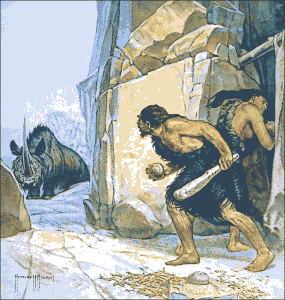
from the New York Times
By ANDREW CURRY
Published: May 19, 2012
For many decades, archaeologists have agreed on an explanation known as the Clovis model. The theory holds that about 13,500 years ago, bands of big-game hunters in Asia followed their prey across an exposed ribbon of land linking Siberia and Alaska and found themselves on a vast, unexplored continent. The route back was later blocked by rising sea levels that swamped the land bridge. Those pioneers were the first Americans.
The theory is based largely on the discovery in 1929 of distinctive stone tools, including sophisticated spear points, near Clovis, N.M. The same kinds of spear points were later identified at sites across North America. After radiocarbon dating was developed in 1949, scholars found that the age of these “Clovis sites” coincided with the appearance at the end of the last ice age of an ice-free corridor of tundra leading down from what is now Alberta and British Columbia to the American Midwest.
Over the years, hints surfaced that people might have been in the Americas earlier than the Clovis sites suggest, . . . Read Complete Report







Leave a Reply